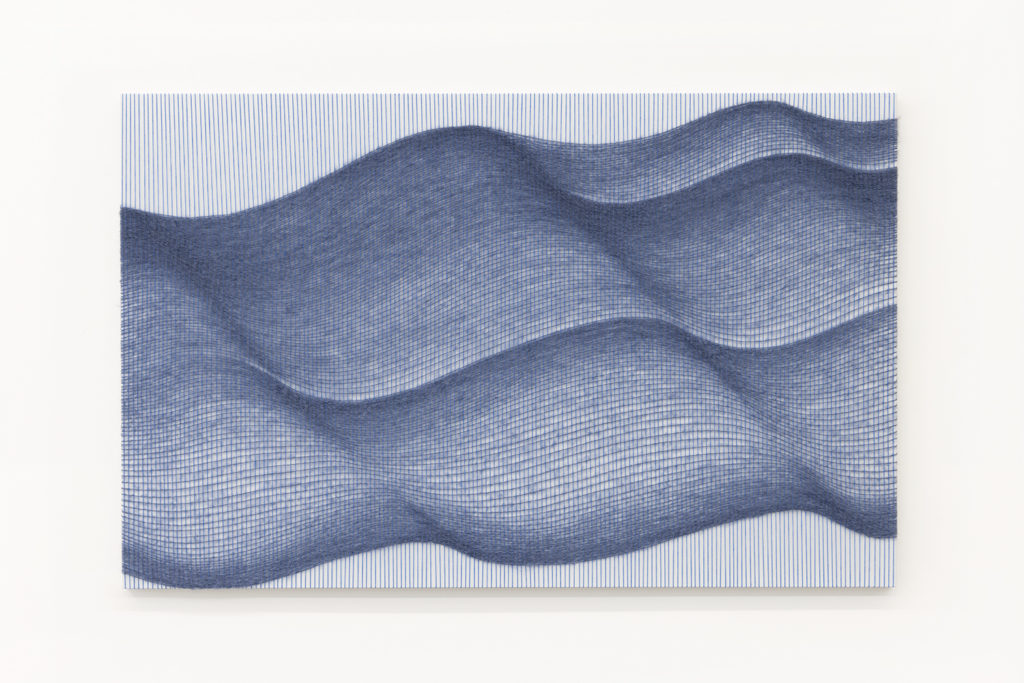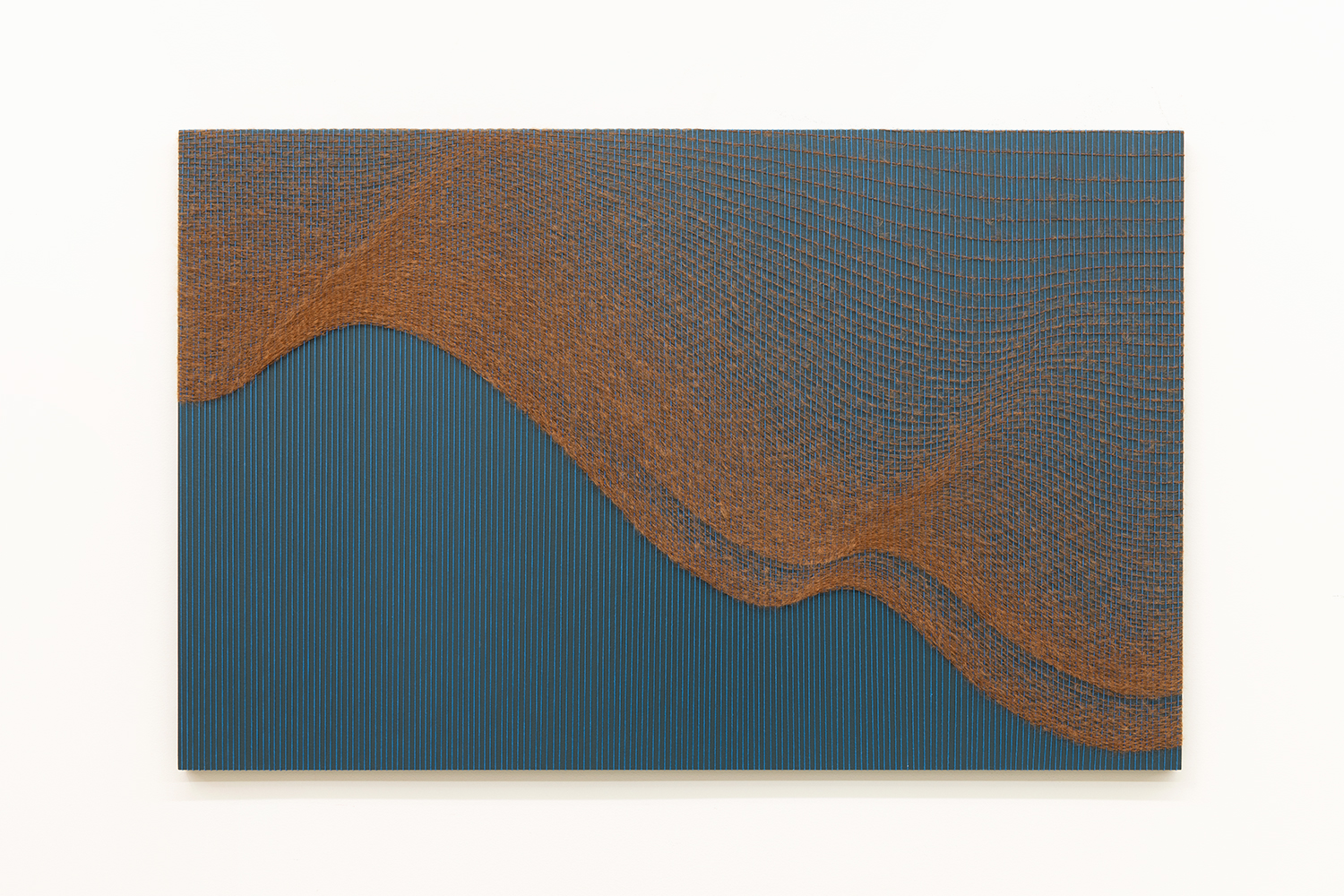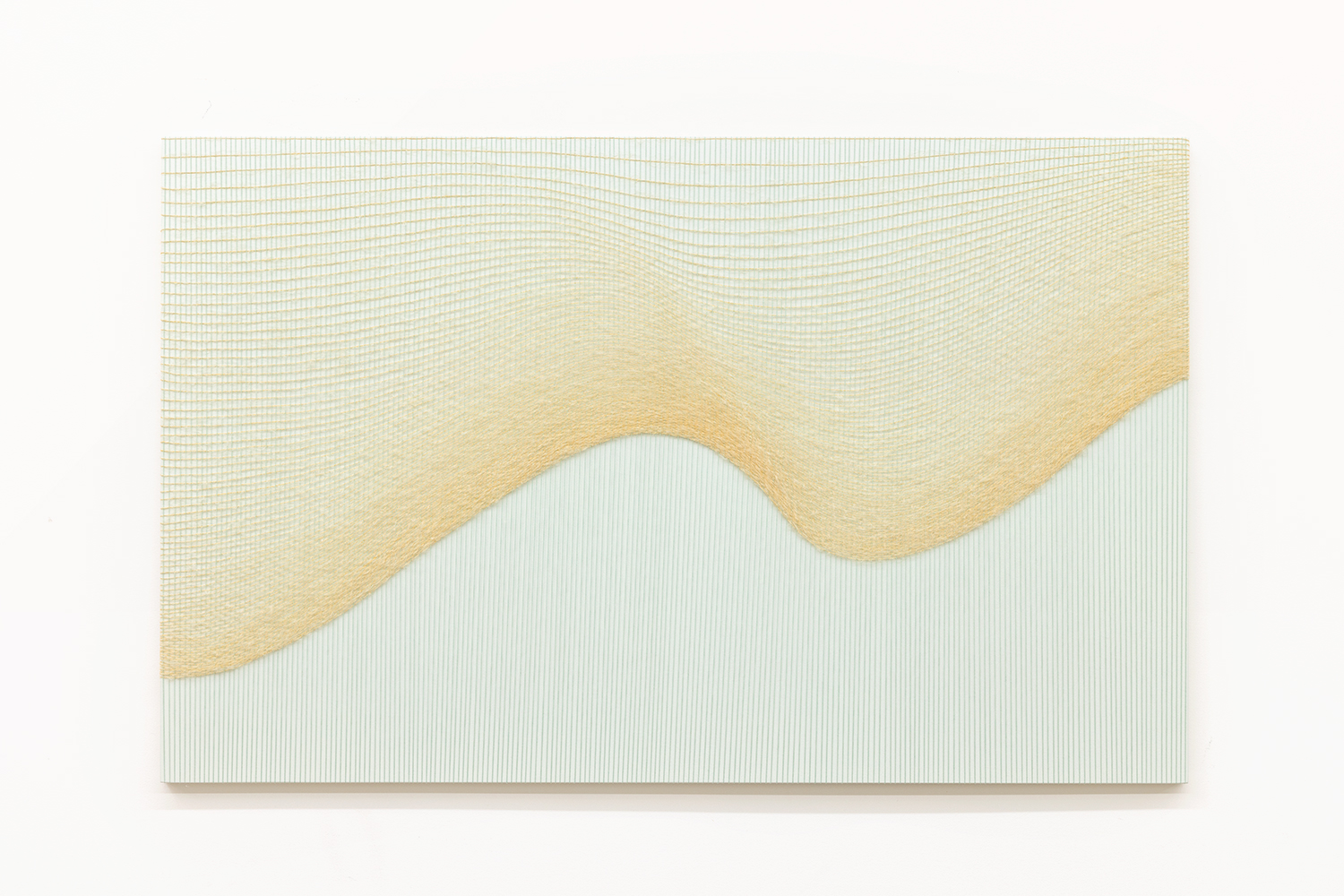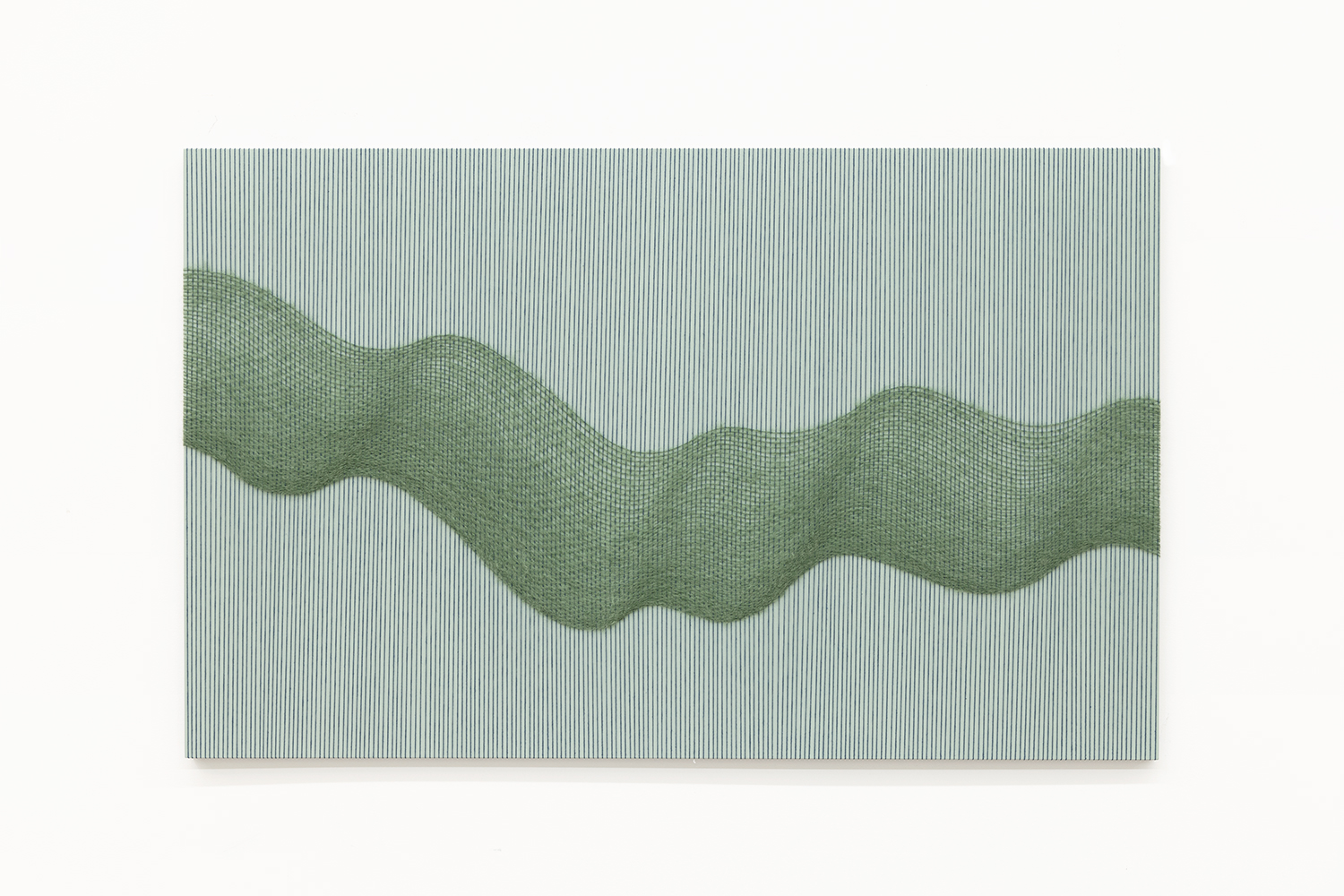
On March 16, 2021, a man attacked three spas in Atlanta, shooting eight people, including six Asian women. Afterward, fiber artist Mimi Jung needed catharsis, so she spent months preparing a series of works called Shield. The pieces, recently on view at the Helen J. Gallery in Los Angeles, explore how our basic survival instincts influence our individual identities. “This body of work was my response,” she says, “my way of coping with the growing fear, anger, and frustration I felt around the lack of acknowledgment and the nonchalant manner in which the authorities resided over the increasing number of hate crimes against AAPI [Asian-Americans and Pacific Islanders] communities.”
Jung weaves each piece on a loom and then mounts them to wooden frames to be hung like paintings. The fibers are drawn taut but spaced apart, like guitar strings made from yarn, against a tightly woven background. “In my work, the shield is not a metal armor but a permeable veil suspended in motion,” she says. “The rippled effect and the undulating movements suggest that lack of permanence.” Together, the pieces ask viewers to conceptually consider who and what warrants defense, who is the harmed and who causes harm. Most of all, though, they pose a question: On which side of the shield do you see yourself? “Many people will tell me how much my work gives them a sense of solace,” Jung says, “and perhaps in that sentiment the viewer has already chosen a side of the shield.”




